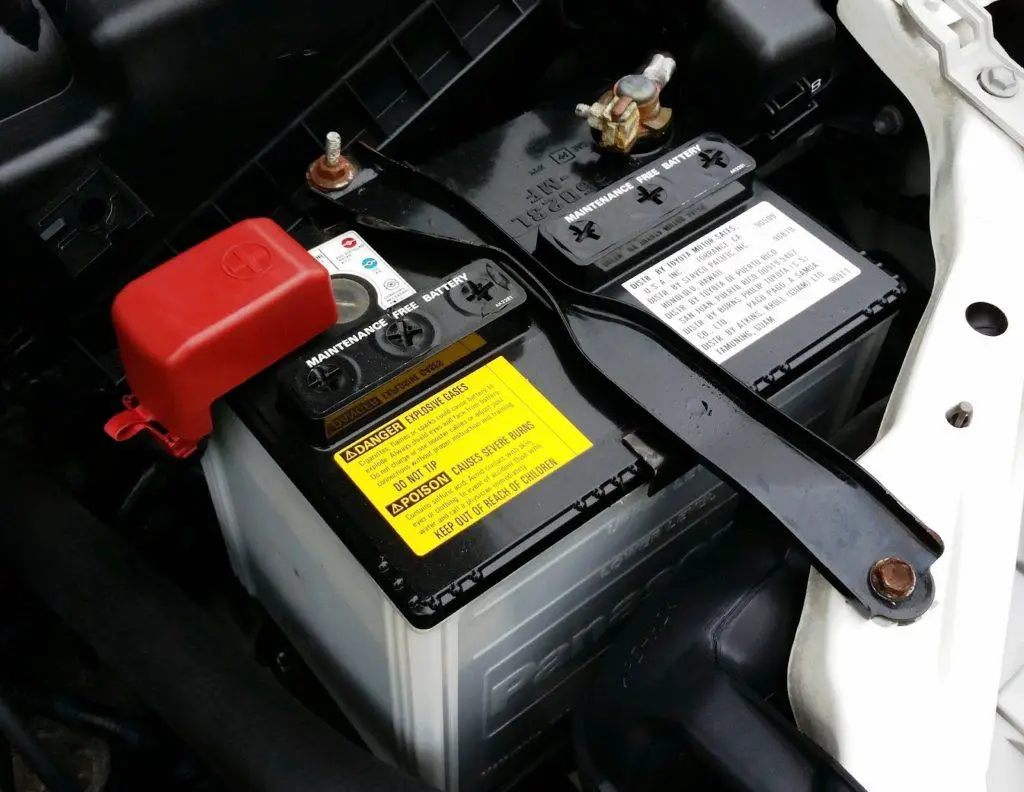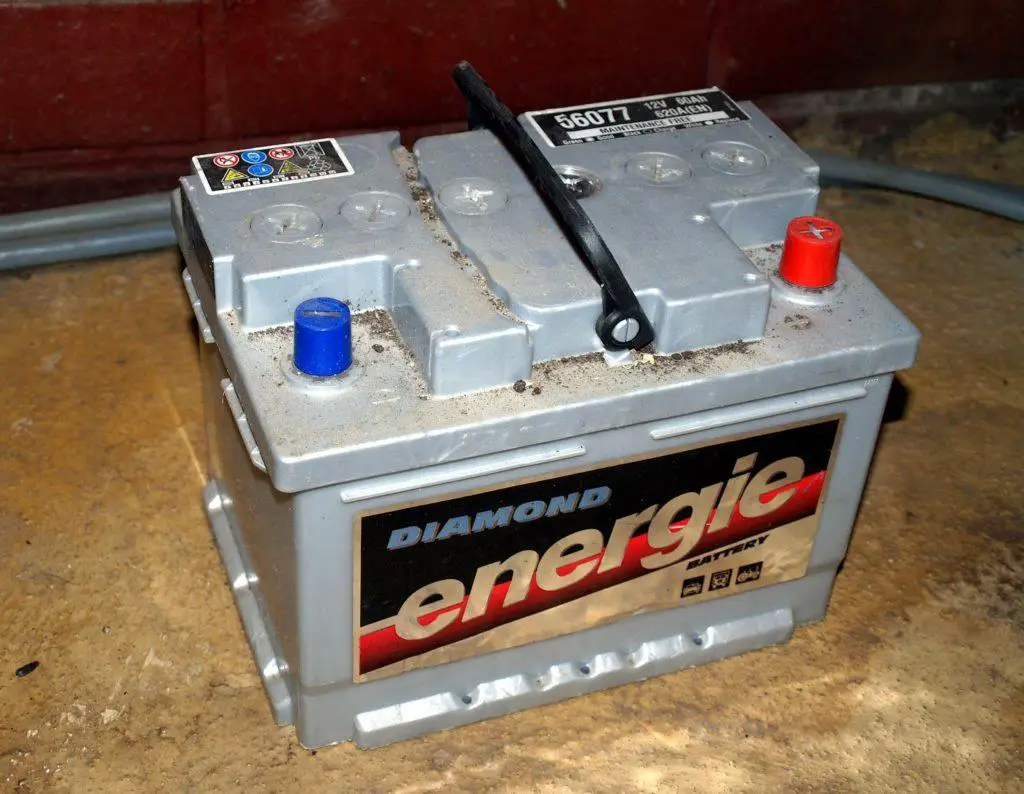A car battery’s amperage depends on your vehicle’s size and type. Some cars require a battery with 550-1000 amps, while others need a more powerful battery with greater capacity.
Understanding this metric can be essential to keep your vehicle running smoothly and efficiently.
It is essential to select a battery that meets your vehicle’s needs and specifications; otherwise, you can experience issues such as dead batteries and unreliable starts.
This comprehensive guide will help you explore how many amps is a car battery so you can make informed decisions about your vehicle.
Jump To
The Anatomy of a Car Battery
A car battery is a rechargeable device that uses chemical energy to provide starter power and assistance with motor activities.
The main components of a car battery consist of 2 metal plates submerged in an electrolyte solution. A chemical reaction creates an electrical current when the battery is in use.
The purpose of this electric current is to power the car’s starter motor and other small electrical components such as lights, the radio, and air-conditioning.

https://pixabay.com/photos/car-engine-moto-auto-vehicle-1564300/
What are Amps?
Amps, or amperage, is a measure of electrical current produced by the battery. It measures the total amount of energy your vehicle needs to run all its electrical components like lights and brakes.
A car battery with more amps can supply more electricity at once than one with fewer amps.
Understanding Cranking Amps
Cranking amps refer to the amount of power used to start an engine and is an essential factor to consider when purchasing a car battery. There are 2 types of cranking amp measurements: cold cranking amps (CCA) and hot cranking amps.
CCA measures car battery amps available at 0°F, while hot cranking amps measure the power available at 80°F. Both measurements are essential for starting an engine in different temperatures and climates.
Amps are measured in milliamps (mA) or amps (A). The higher the number, the more current is available for use.
Importance of Cold Cranking Amps
When selecting a car battery, CCA should be given particular attention, as colder temperatures can affect a battery’s performance. A higher CCA rating indicates that a battery can provide more power in colder temperatures.
Therefore, when looking at batteries or replacing an existing one, it is crucial to consider Cold Cranking Amps.
What is the Battery Reserve Capacity?
The battery reserve capacity (RC) measures how long a car battery can provide power if the alternator fails or if other electrical components take up more current than expected.
A higher RC indicates that the battery will last longer in cases where alternators fail or when additional electrical demands are placed on the system. The RC is typically measured in minutes rather than amps.
Understanding the amp rating and Cold Cranking Amps of a car battery is essential for making informed decisions about your vehicle’s electrical system.
Knowing how to determine these metrics will help ensure that your car has enough power when temperatures drop or other components take up more current than expected.
How Do You Determine How Many Amps is a Car Battery?
It is essential to know how many amps a car battery can provide when driving, as this will ensure the proper functioning of the vehicle and any additional components.
Generally, most car batteries have a Common Cranking Amps rating between 500 and 1000 amps. However, the exact amount can vary depending on the battery’s type, age, and condition.
To determine the number of amps your car’s battery provides, you can use a multimeter, which is a device that measures electrical current. By testing your car’s battery with a multimeter, you can get an accurate reading of the amps it provides.
Test Your Car Battery Amps with a Multimeter
Testing the amps on your car battery is relatively straightforward if you have a multimeter and understand how to use it. Here are the steps:
- Turn off the car and any other electrical components.
- Set your multimeter to measure amps, usually indicated as “A” or “mA” on the device.
- Connect the multimeter to the battery’s terminals, being sure to connect the red lead (positive terminal) to the positive and the black lead (negative terminal) to the negative.
- Start the car, and record the amount of current displayed on the multimeter screen.
Any extra electrical components in the car will require additional amps. An amp rating does not indicate the longevity of a battery—instead, it just tells you how much instantaneous power a battery can give.
Ensure your car battery charger has enough charge to support all necessary components.

https://commons.wikimedia.org/wiki/File:Diamond_Energie_car_battery.jpg
What to Consider Before Buying a Car Battery
When selecting a car battery, other factors should also be taken into consideration. This includes the size of the battery, chemistry, and if it is compatible with your vehicle’s engine.
Size and Design
The size and design of car batteries vary depending on the make and model of the vehicle. The shape, size, and physical characteristics such as Cranking Amps, Reserve Capacity, and amp rating will all differ between different types of batteries.
Chemistry
The type of chemical material used in the battery will also affect its performance, so it’s important to consider when buying a replacement. Batteries can be made with either lead-acid or lithium-ion technology, and the choice should depend on your needs.
Car batteries are usually lead-acid type rechargeable batteries. They typically contain a combination of sulfuric acid and lead plates, which store the electrical charge.
Compatibility
Ensuring your car battery is compatible with your vehicle’s engine is essential. The battery must fit into the area provided, and its electrical and physical characteristics must match the engine.
Voltage
The voltage rating indicates the amount of power a battery can provide when fully charged, so it’s important to ensure that the battery you buy is compatible with your vehicle’s electrical system.
Most vehicles use 12-volt batteries, although some larger ones may use 24-volt batteries.
Capacity
The capacity of a car battery is usually measured in amp-hours and can vary depending on the type of vehicle and its electrical components. Generally, higher amp-hour ratings indicate that the battery will last longer before needing to be recharged.
Warranty
Most car batteries come with a warranty. Warranties vary significantly between brands and types, so it’s essential to read the fine print before purchasing.
Price
Finally, the car battery’s price should also be considered. While higher-end batteries may cost more initially, they often last longer and provide more value in the long run.
How to Maintain Your Car Battery
The life expectancy of a car battery can be extended with proper maintenance and care. Here are some tips to get the most out of it.
Keep the Terminals Clean
Cleaning the terminals of your car battery regularly prevents corrosion and helps maintain a smooth electrical connection. Corrosion can cause your battery to charge inefficiently, so it’s important to keep the terminals clean.
Check the terminals regularly for corrosion, which can reduce the current the battery can provide. If you see corrosion, use a wire brush to remove it.
Test the Battery Regularly
Checking your car battery levels is a quick and easy way to identify potential issues before they become too severe.
Use a multimeter or a battery tester to measure the voltage of the battery. A healthy battery should show a voltage of 12.4V or higher, depending on your vehicle’s electrical system.
If the reading is below 10 volts, replace it as soon as possible.
Charge the Battery Regularly
Your car battery will gradually discharge over time, so it’s important to recharge regularly. Make sure to charge the battery after every long trip or extended period of inactivity.
To avoid damaging your battery, use a slow-charging method such as trickle charging. This will help keep it at maximum capacity and prolong its life.

Flickr Image by Nenad Stojkovic
Keep the Connections Tight
Loose connections can cause power loss and even cause the battery to overheat. Ensure that all of your car’s terminals are tightly secured and all cables are in good condition.
Keep the Battery in a Cool, Dry Place
Ensure the battery is stored away from direct sunlight and heat. This will help prevent corrosion and reduce the risk of overheating.
Final Thoughts
Understanding how many amps a car battery has and why this information is important can go a long way in helping you keep your vehicle running smoothly and safely.
No matter what type of vehicle you have, it is essential to ensure that you have enough power to start and run additional electrical components.
By checking your vehicle’s service manual and comparing different car batteries, you will ensure that you have the proper power for all your needs.

2 thoughts on “How Many Amps is a Car Battery?”
Comments are closed.